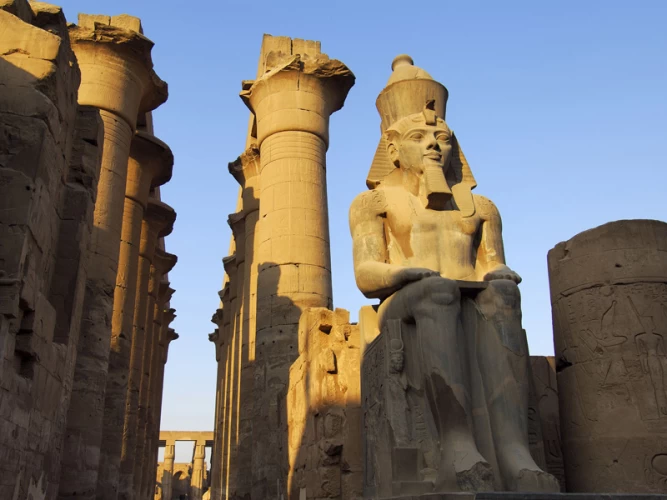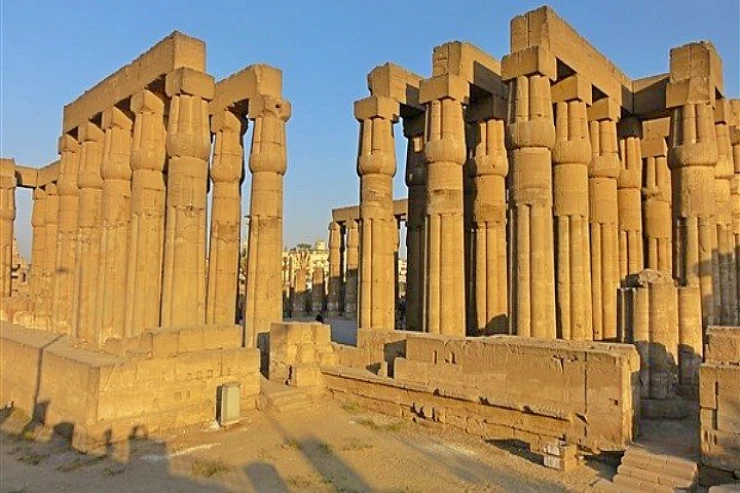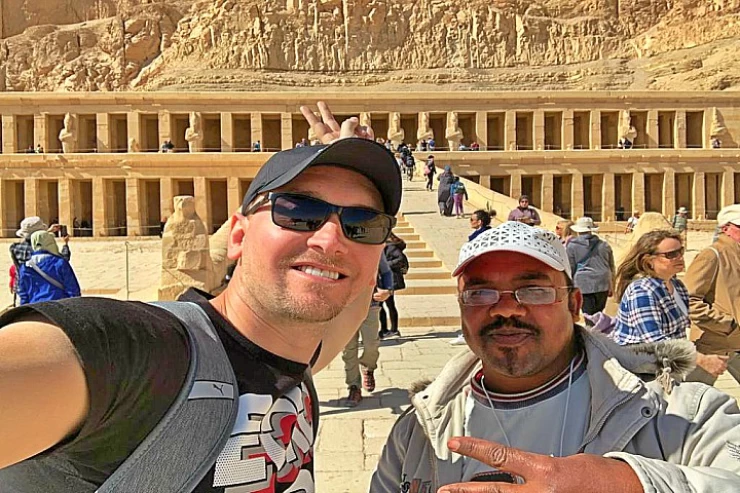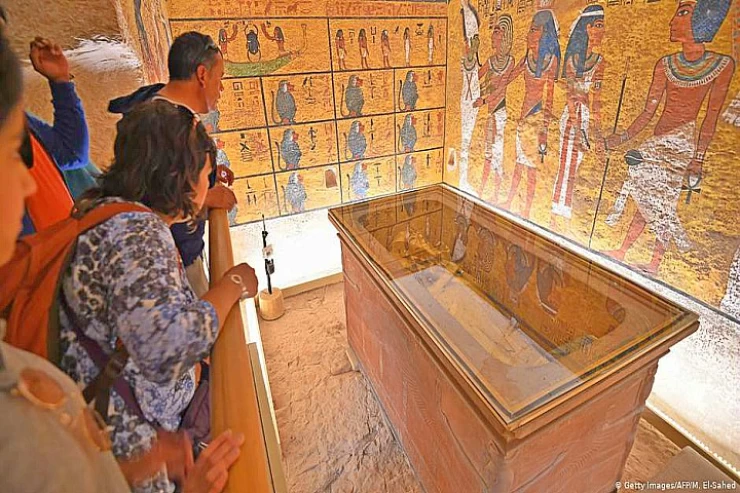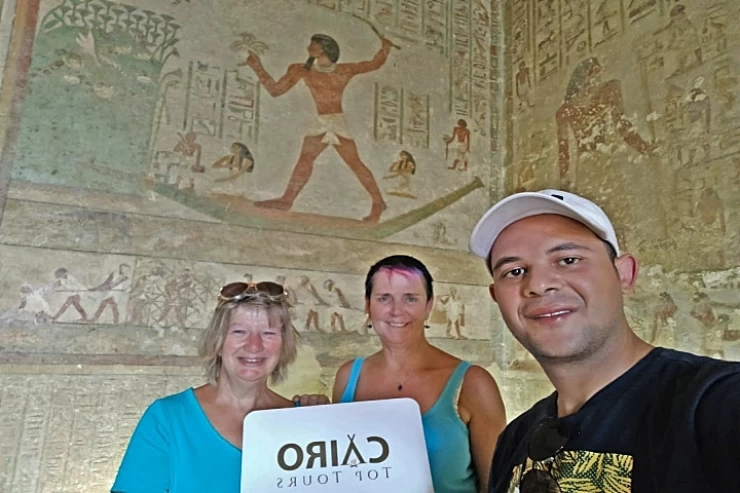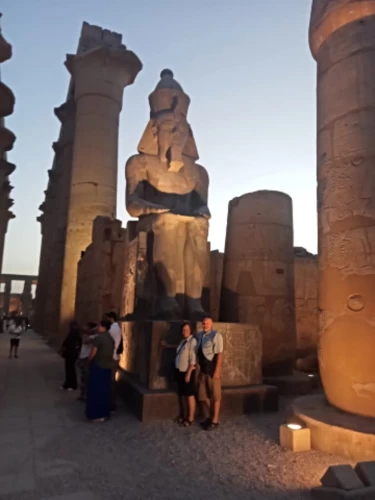In the morning, one of our representatives will be waiting for you at your hotel in Aswan to take you to Luxor in a modern air-conditioned car, where you can immerse yourself in the beautiful history of the ancient Egyptians.
Your tour starts with a memorable stop on Luxor's west bank, where you can explore On the west bank of the Nile River, across from Thebes (modern-day Luxor), in the center of the ancient funerary city of Thebes, lies the Valley of the Kings, also called the Valley of the Pipan of the Kings. For five hundred years, from the sixteenth to the eleventh centuries BC, tombs were constructed for the pharaohs and nobles of the New Kingdom during the eighteenth to twentieth dynasties of Ancient Egypt. There are two valleys in the Valley of the Kings: the eastern one, which contains the majority of the royal tombs, and the western one.
The two colossi of Memnon, also called kolsat or salamat in a dialect of the area, are enormous statues that were constructed around 1350 BC. They are the only remnants of a temple dedicated to Pharaoh Amenhotep III, the Eighteenth Dynasty ruler of Egypt, and are situated in the funerary city of Thebes, which is west of the Nile River from the modern-day city of Luxor.
Additionally, you will have the chance to see the Temple of Queen Hatshepsut. It is a collection of pharaonic tombs and temples situated in front of Luxor, Egypt, on the west bank of the Nile. The region was given the present Arabic name Al-Deir Al-Bahri in the seventh century AD after the Copts utilized this temple as a monastery. Queen Hatshepsut constructed it to carry out ceremonies that would help her in the afterlife. Three ascending amphitheaters make up the temple, which is joined by sloping platforms for climbing and descending. The funeral temple of Mentuhotep II, who lived in the eleventh Dynasty in the twenty-first century BC, was the first monument erected on this location.
We next move to the east bank, where you can see the grand Luxor Temple, an ancient Egyptian temple complex situated on the east bank of the Nile River in what is now Luxor, also known as ancient Thebes. Established in 1400 BC. Amun-Ra, his wife Mut, and their son Khonsu were worshipped at the Luxor Temple. The Karnak Temple is a collection of temples, structures, and columns that were expanded and constructed in Luxor, Egypt, on the eastern shore, from the Pharaonic period—more especially, the Middle Kingdom kings—until the Roman era. The temple was constructed for Amun, or Amun-Ra as it is now known, the heavenly trinity.
After a full day of unforgettable adventures, we return to your hotel in Aswan.



